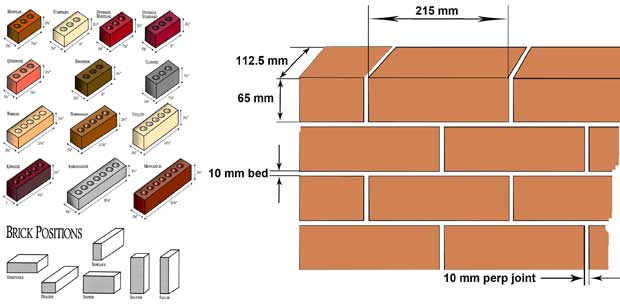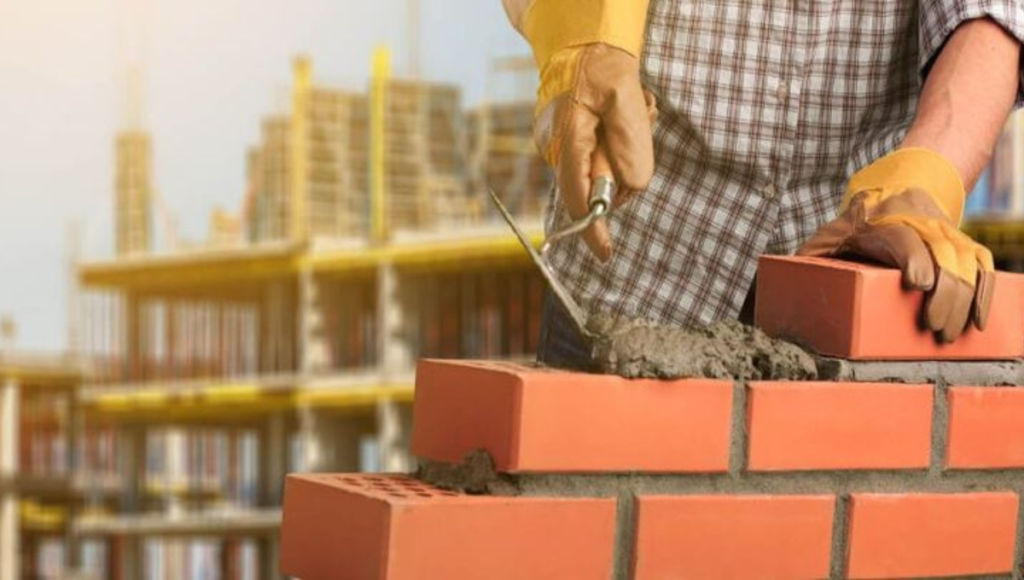Brick dimensions are a critical factor in construction and renovation projects. The size of each brick affects design, cost, structural integrity, and installation efficiency. Whether you are planning a new build, an exterior wall, a retaining wall, or a decorative feature, knowing the right brick dimension ensures your project runs smoothly. This guide explains standard brick dimensions, modular brick dimension, and other common sizes used in construction. We also cover typical brick dimensions, average brick dimensions, and even lego brick dimensions for modeling purposes.
Understanding Brick Dimension
Brick dimensions refer to the length, width, and height of a brick. Accurate measurements help determine how bricks align, the number of bricks needed per square foot, and the pattern or bond of the wall. Using correct dimensions also ensures structural stability and avoids unnecessary cutting or waste.
There are two ways to measure bricks: actual size and nominal size. The actual size is the physical size of the brick, while the nominal size includes the standard mortar joint, usually 3/8 inch. Builders and architects rely on nominal sizes for planning layouts, while masons use actual sizes for installation. Understanding both helps avoid alignment errors and simplifies material estimation.

Standard Brick Dimensions
Standard brick dimensions are widely used across construction projects. The modular brick dimensions are the most common because they integrate well with modern building materials and standard construction grids. Standard bricks provide durability and visual consistency for walls, foundations, patios, and exterior façades.
Typical standard size brick dimension:
- Actual size: 7 ⅝” × 3 ⅝” × 2 ¼”
- Nominal size: 8″ × 4″ × 2 ⅔”
These dimensions are popular for residential and commercial projects due to their versatility, cost-efficiency, and ease of installation.
Typical Brick Dimensions
Typical brick dimensions refer to the sizes most frequently used in masonry projects. While slight variations exist between manufacturers, most bricks align closely with modular sizes. Builders choose typical dimensions to match design requirements, wall thickness, and load-bearing capacity. Homeowners can also use these dimensions for remodeling or DIY projects to ensure a consistent and professional finish.
Average Brick Dimensions
Average brick dimensions provide a reference point across multiple brick types. These averages help with material planning and cost estimation. Larger bricks like utility bricks reduce labor time, while smaller bricks allow for intricate detailing and decorative patterns. Knowing the average size of bricks helps contractors calculate the total number needed and manage project costs efficiently.
Modular Brick Dimensions
Modular bricks are the most commonly used type in construction. Their dimensions align perfectly with standard building practices, making them ideal for walls, chimneys, and structural elements. Modular brick dimensions ensure fast installation and reduce material waste.
- Actual size: 7 ⅝” × 3 ⅝” × 2 ¼”
- Nominal size: 8″ × 4″ × 2 ⅔”
Contractors prefer modular bricks because they simplify layout planning, speed up installation, and maintain uniformity across walls.
Other Common Brick Sizes
1. Standard Brick
- Actual size: 8″ × 3 ⅝” × 2 ¼”
- Nominal size: 8″ × 4″ × 2 ⅔”
Used for residential and commercial walls, closely aligned with modular bricks but slightly longer.
2. Queen Brick
- Actual size: 7 ⅝” × 2 ¾” × 2 ¾”
- Nominal size: 8″ × 3″ × 3″
Covers more wall area with fewer units. Ideal for veneer walls or decorative applications.
3. Engineer Brick
- Actual size: 7 ⅝” × 3 ⅝” × 2 ¾”
- Nominal size: 8″ × 4″ × 3″
Dense and strong. Perfect for retaining walls, foundations, and high-load areas.
4. Utility Brick
- Actual size: 11 ⅝” × 3 ⅝” × 3 ⅝”
- Nominal size: 12″ × 4″ × 4″
Large bricks that reduce installation time. Often used in commercial or industrial construction.
5. Norman Brick
- Actual size: 11 ⅝” × 3 ⅝” × 2 ¼”
- Nominal size: 12″ × 4″ × 2 ⅔”
Sleek and elongated, suitable for modern architectural designs and accent walls.
Comparison Table: Brick Dimensions
| Brick Type | Actual Size (L×W×H) | Nominal Size (L×W×H) | Best Use |
|---|---|---|---|
| Modular Brick | 7 ⅝” × 3 ⅝” × 2 ¼” | 8″ × 4″ × 2 ⅔” | Residential walls, structural |
| Standard Brick | 8″ × 3 ⅝” × 2 ¼” | 8″ × 4″ × 2 ⅔” | Homes, commercial projects |
| Queen Brick | 7 ⅝” × 2 ¾” × 2 ¾” | 8″ × 3″ × 3″ | Veneer, decorative |
| Engineer Brick | 7 ⅝” × 3 ⅝” × 2 ¾” | 8″ × 4″ × 3″ | High-load, retaining walls |
| Utility Brick | 11 ⅝” × 3 ⅝” × 3 ⅝” | 12″ × 4″ × 4″ | Commercial construction |
| Norman Brick | 11 ⅝” × 3 ⅝” × 2 ¼” | 12″ × 4″ × 2 ⅔” | Modern façades, design walls |
LEGO Brick Dimensions
LEGO brick dimensions are often referenced for educational or design purposes. While not used in masonry, they illustrate precise ratios that inspire modeling, architectural planning, and creative designs.
- Standard LEGO brick: 31.8 mm × 15.8 mm × 9.6 mm
These dimensions allow LEGO bricks to stack perfectly and maintain stability in models.
How Brick Dimensions Affect Construction
Brick size impacts every aspect of a project:
- Determines wall layout and bond patterns
- Influences labor and installation time
- Affects mortar use and spacing
- Ensures structural alignment
- Helps estimate material quantity
- Maintains aesthetic consistency
Using consistent brick dimensions prevents mistakes, ensures a professional finish, and keeps projects on schedule.
Choosing the Right Brick Size
When selecting bricks, consider the project type and aesthetic goals:
- Modular bricks for general construction and efficiency
- Queen or Norman bricks for modern or decorative walls
- Utility bricks for commercial and industrial structures
- Engineer bricks for high-load and moisture-prone areas
Always verify the size with suppliers before ordering, as minor variations can affect installation.
Frequently Asked Questions
What are the standard brick dimensions?
Modular brick dimensions, 7 ⅝” × 3 ⅝” × 2 ¼” (actual), are most common for walls.
What are typical brick dimensions?
Typical dimensions are close to modular or standard sizes, depending on manufacturer.
What are average brick dimensions?
Average brick dimensions refer to commonly used sizes for general construction and landscaping.
What are modular brick dimensions?
Modular bricks are 7 ⅝” × 3 ⅝” × 2 ¼” (actual) and 8″ × 4″ × 2 ⅔” (nominal).
What are LEGO brick dimensions?
LEGO bricks are 31.8 mm × 15.8 mm × 9.6 mm and used for modeling, not masonry.
How do brick dimensions affect wall strength?
Brick size and thickness impact load-bearing capacity and durability.
Conclusion
Understanding brick dimensions is essential for construction planning, cost estimation, and design accuracy. From standard brick dimensions to modular brick dimensions, knowing the sizes ensures consistent, durable, and visually appealing results. Whether building walls, patios, retaining walls, or decorative features, selecting the right brick size helps save time, reduce costs, and achieve a professional finish. Using this guide, you can confidently plan any masonry project and choose the right bricks for your needs.
Contact Liberty GCNY
Website: www.libertygcny.com
Phone: (347) 682-9840
Serving: Manhattan, Brooklyn, Queens, The Bronx, Westchester County, and Long Island.
Address:110-14 178th St, Jamaica, NY


